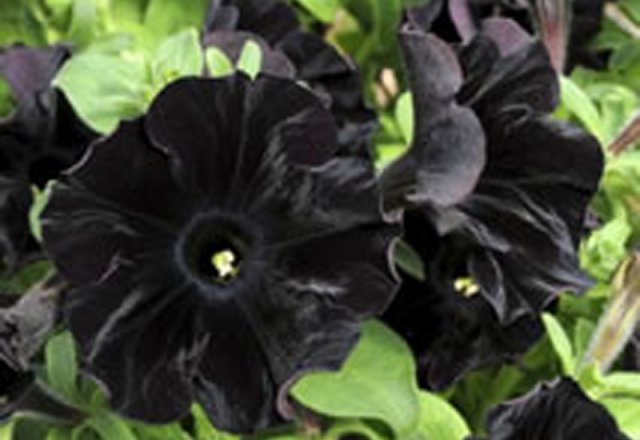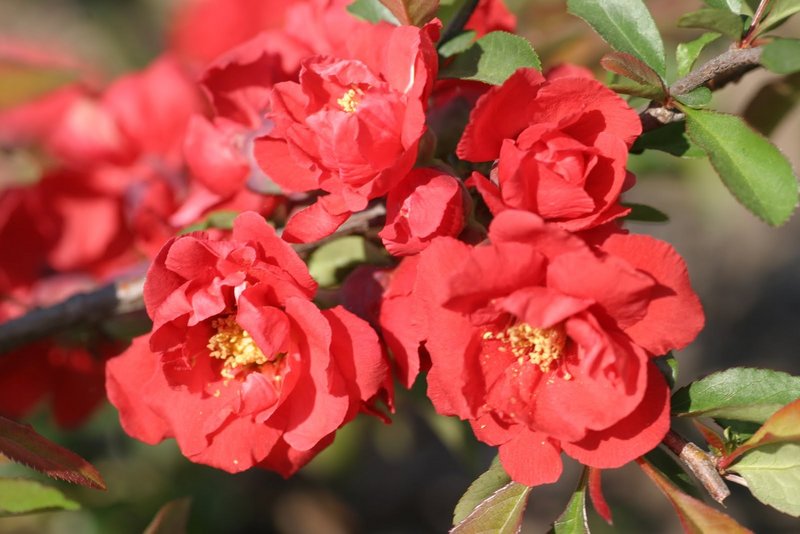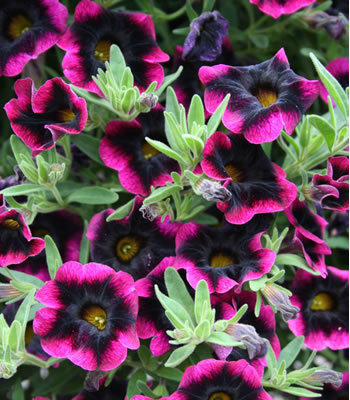Nancy and I have been looking out at our yard a lot this winter and early spring, mostly because it has been too cold and windy to go outside.
We have to replace some plants — a false cypress (chamaecyparis) that has outgrown its space, a Japanese maple that is failing and a witch hazel that simply has been disappointing. So I have been looking forward to making the calls for the new-plants column I do about this time every year.
I’m interested in a variegated Japanese red pine called “Golden Ghost” that Jeff O’Donal of O’Donal’s Nursery in Gorham mentioned during a program for landscapers in February. It has yellow and green needles, is most vibrant in summer and fall, and grows 10 feet tall and 6 feet wide.
The idea of the plant sounds great, but I am going to have to convince Nancy — not only because it costs about $180. And I am going to have to see it in person to make sure it doesn’t look like a regular white pine that looks just a little sick.
Enough about me.
The other sources for this year’s column are Tim Bate of Skillins Greenhouses in Falmouth; Tom Estabrook and Jim Masse of Estabrook’s Farm and Gardens in Yarmouth, Scarborough and Kennebunk; Hammond Buck of Plants Unlimited in Rockport; and Steven Palmer of Plainview Farms in North Yarmouth.
And there are four new shrubs that lead the list: the “Bella Anna” hydrangea; two double-flowering quince called “Double Take Orange Storm” and “Double Take Pink Storm”; and, although it was available as a limited release last year, the “Bloomerang” lilac.
“Bella Anna” is marketed by Bailey’s Nurseries as part of its “Endless Summer” series, even though “Bella Anna” is an arborescens hydrangea like the older, white “Annabelle.” The other “Endless Summer” hydrangeas are macrophylla.
For those who don’t speak plant Latin, the arborescens have elongated blossoms and traditionally have been white, while the macrophylla are spherical and typically blue or pink. “Bella Anna,” introduced by Michael Dirr, is reported to be pinker than “Invincibelle Spirit,” a pink arborescens introduced last year in the Proven Winners line.
The two “Double Take” quince (Chaenomeles, although that is a Latin name almost no one uses) are double-flowering, deer resistant, early blooming and striking. They have neither thorns nor fruit, and they are described as looking like camellias.
The “Bloomerang” lilac sold out quickly when it was introduced last year. It is fragrant and a bright lilac color, but instead of blooming only in April, it is supposed to bloom throughout the summer.
O’Donal didn’t mention the “Double Take” quince, but did mention two others: “Iwai Nishiki,” which attracts hummingbirds and has deep-red double blooms, and “O Yashima,” which has large white double blossoms. He said “Iwai Nishiki” is “thick, thorny and salt-tolerant,” and ideal for a hedge at the edge of a street.
Tim Bate is high on a native honeysuckle vine called “Major Wheeler.”
“It has an orange-red, trumpet-like flower that will rebloom, although it is heaviest in the early summer,” Bate said. “The thing that really caught my eyes is that it is very disease-resistant and really one of the best honeysuckle vines.”
He said it will probably grow 8 to 10 feet if supported on a fence or trellis and is striking.
If you have read that honeysuckle is invasive, don’t worry. The invasive one is a Japanese shrub, while this is a native vine.
Estabrook also likes a Japanese maple that was a hit in the garden he created at the Portland Flower Show last month.
“Acer ‘Orange Dream’ is a nice Japanese maple that starts orange in the spring, turns a lime color and then turns back to orange again in the fall,” Estabrook said.
But flower gardening isn’t only plants and shrubs. There are also perennials and annuals.
Buck of Plants Unlimited in Rockport was impressed by three different black petunias, especially “Black Velvet.” There is also a black pinstriped one he likes.
Estabrook is high on some new Calibrachoa, common name Million Bells, in the Proven Winner line.
” ‘Coral Berry Punch’ and ‘Blackberry Punch’ are absolutely stunning,” he said. “I think they are going to be big sellers.”
Two heucheras, or coral bells, he admires are bicolors called “Lime Marmalade” and “Berry Smoothie.” He especially likes “Berry Smoothie,” which is a purplish red with dark veins running through it.
Palmer had an interesting take on “new,” saying he is “not sure what constitutes ‘new’ any more. Years ago, there were really new, novel, unique plants never seen before in the perennial world. Today, the nuances in new are hard to see.”
Among the ones he mentioned are Papaver “Place Pigalle,” an Oriental poppy with white petals surrounded by a vermillion edge; Helianthus “Sunshine Daydream,” an exquisite summer-blooming member of the sunflower family with large, 2.5-inch double-petaled yellow blossoms; and the “Milk and Honey” astilbe.
“Since this is a chinensis form, it is — among astilbes — relatively tolerant of dry conditions,” Palmer said. “Charming white blossoms appear in early August.”
He also said he gave the “Pink Penny” geranium a trial and was impressed. “An early summer pink-blooming variety reaching 12 inches in height but having a broader spread to 24 inches,” he said. It will bloom sporadically through the rest of the season and turn copper color in the fall.
O’Donal, meanwhile, is excited about the Barth line of daylilies.
O’Donal’s purchased the line — created by Dr. Joseph Barth in Alna and continued by his son, Nicholas Barth, in Dresden — last summer. But this year, there will be more of them for sale at the Gorham nursery.
Nick Barth looks for daylilies that have a branching, candelabra form with multiple stems and blossoms.
Tom Atwell can be contacted at 791-6362 or at
tatwell@pressherald.com
Send questions/comments to the editors.






Comments are no longer available on this story